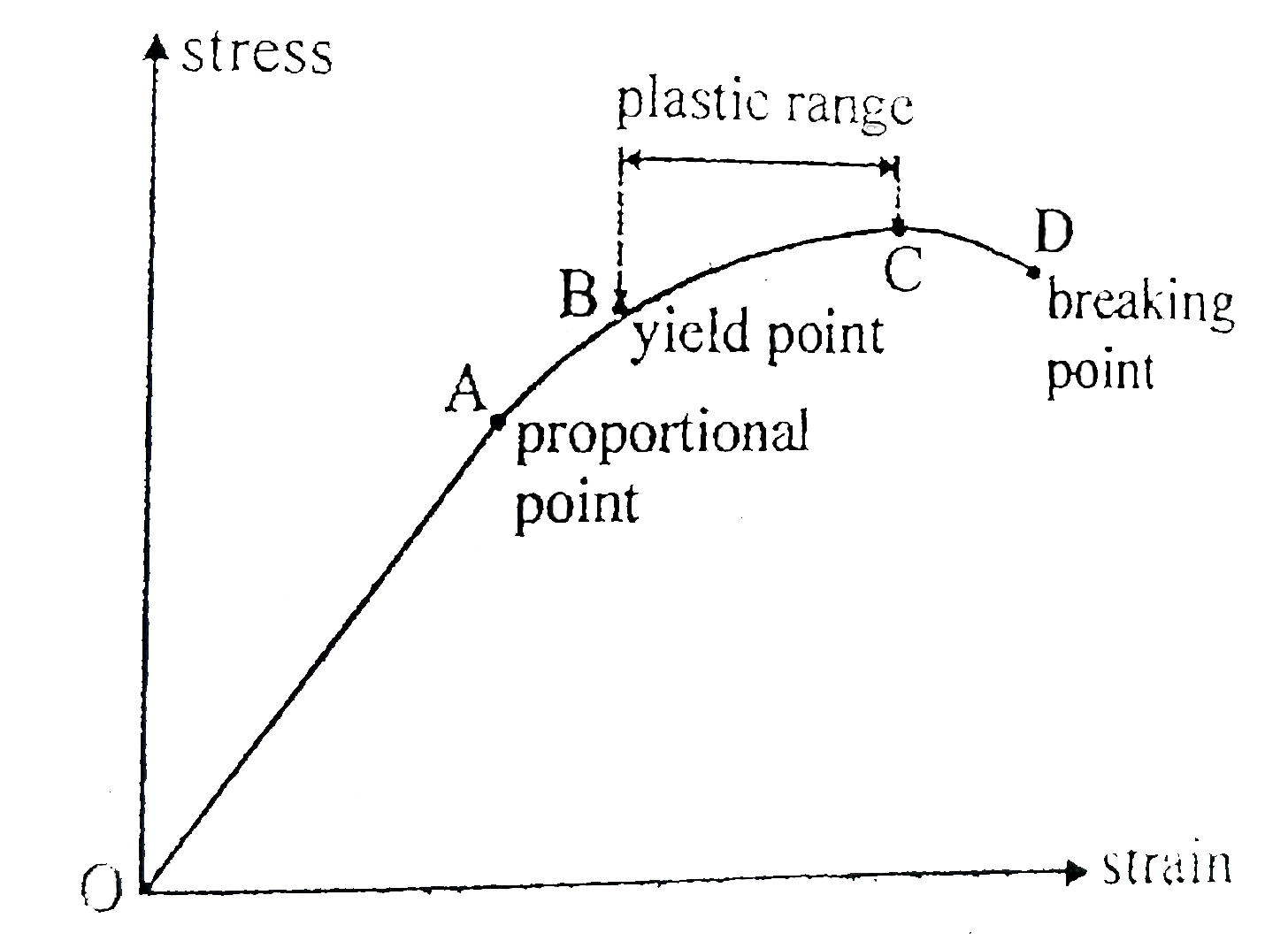Hooke's Law|Stress-Strain Curve
Step by step video & image solution for Hooke's Law|Stress-Strain Curve by Physics experts to help you in doubts & scoring excellent marks in Class 11 exams.
Updated on:21/07/2023Similar Questions
Knowledge Check
Hooke's law states that,
Astress and strain are independent of each otherBstress is inversely proportional to the strain produced in the wire within the elastic limitCstress is directly proportional to the strain produced in the wire within the elastic limitDstrain is inversely proportional to stress produced in the wireAssertion Upto elastic limit of a stress-strain curve, the steel wire tends to regain its original shape when stress is removed.
Reason Within elastic limit, the wire follows Hooke's law.AIf both Assertion and Reason are true and Reason is the correct explanation of Assertion.BIf both Assertion and Reason are true but Reason is not the correct explanation of Assertion.CIf Assertion is true but Reason is false.DIf both Assertion and Reason are false.The point on the stress-strain curve at which the strain begins to increase even without any increase in the stress is
Aelastic limit pointBbreaking pointCplasticity limit pointDyield point
Elasticity - Introduction|Terminology To Study Strength / Elasticity Of A Certain Solid|Hooke's Law|Hooke's Curve|Questions|Energy Density|Bulk Modulus
View SolutionDistinguish between ductile and brittle materials on the basis of stress-strain curve
View Solution
The diagram shoes stress v/s strain curve for the materials A and B. From the curves we infer that
View SolutionFigure shows the relationship between tensile stress and strain for a typical material. Below proportional point A, stress is directly proportional to strain which means Young's moudulus (Y) is a constant. In this region the material obeys Hooke's law.

Provided the strain is below the yield point 'B' the material returns to its original shape and size when the force is removed. Beyond the yield point, the material retains a permancnt deformation after the stress is removed. For stresses beyond the yeld point, the material exhibit plastic flow, which means that it continues to elongate for little increases in the stress. Beyond C a local constriction occurs. The material fractures at D (i.e. breaking point). The graph below shows the stress-strain curve for 4 different materials.

If you bough a new shoe which bites in the beginning and later on fits perfectly, then the material used to making the shoe is
View SolutionFigure shows the relationship between tensile stress and strain for a typical material. Below proportional point A, stress is directly proportional to strain which means Young's moudulus (Y) is a constant. In this region the material obeys Hooke's law.

Provided the strain is below the yield point 'B' the material returns to its original shape and size when the force is removed. Beyond the yield point, the material retains a permancnt deformation after the stress is removed. For stresses beyond the yeld point, the material exhibit plastic flow, which means that it continues to elongate for little increases in the stress. Beyond C a local constriction occurs. The material fractures at D (i.e. breaking point). The graph below shows the stress-strain curve for 4 different materials.

Material which is good for making wires by stretching is
View Solution

